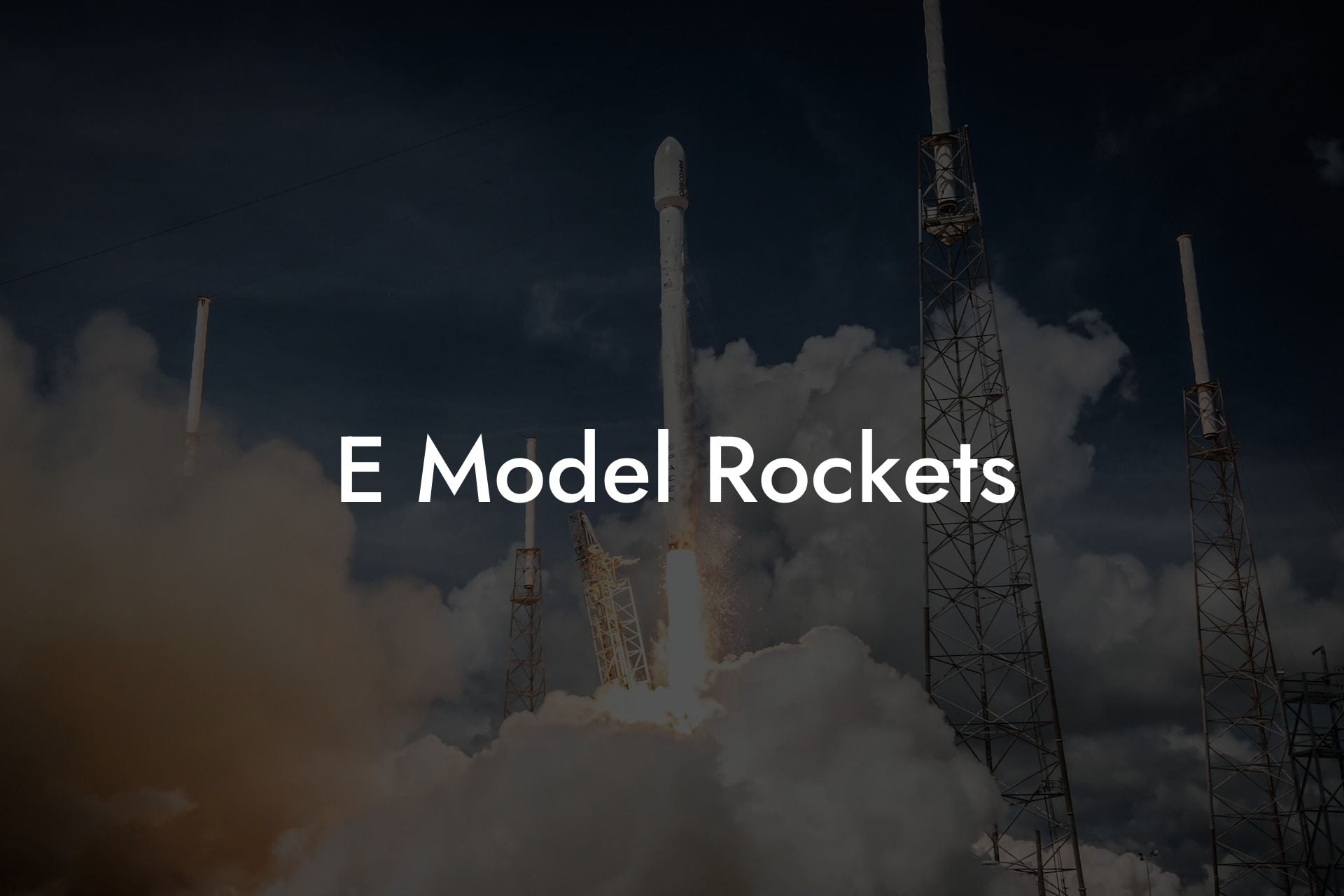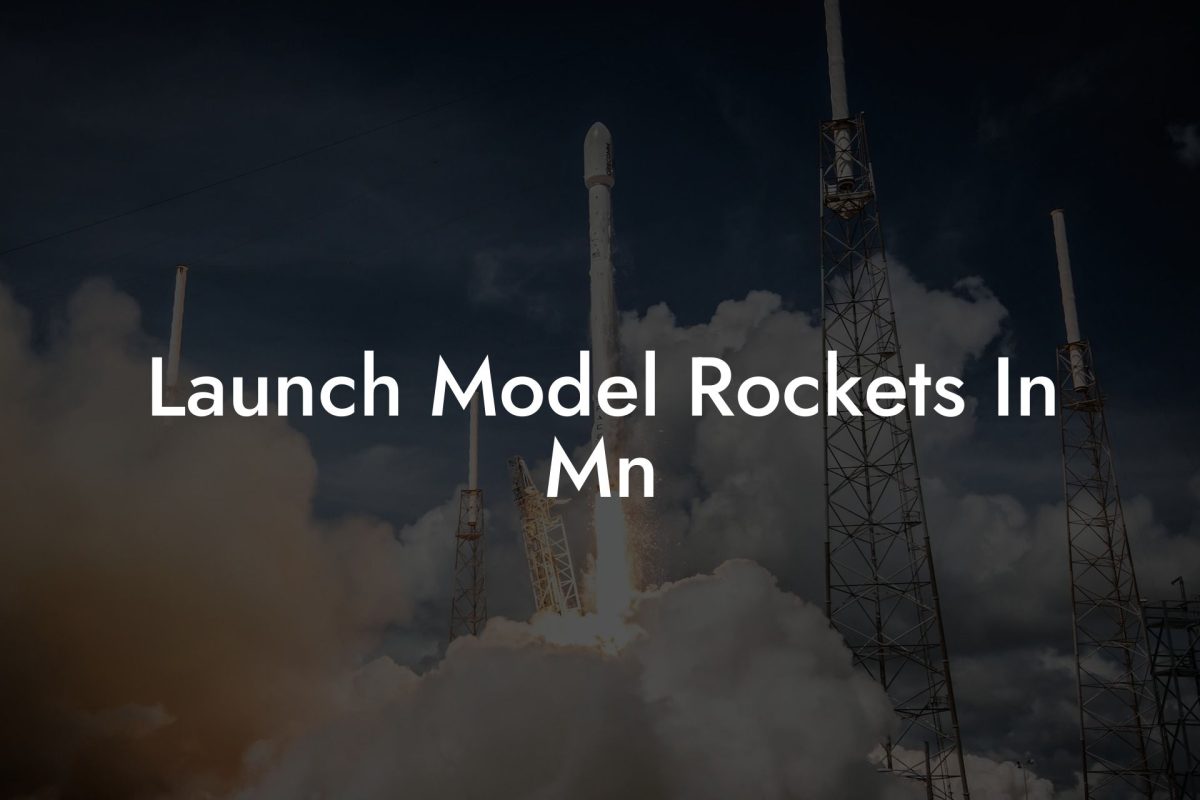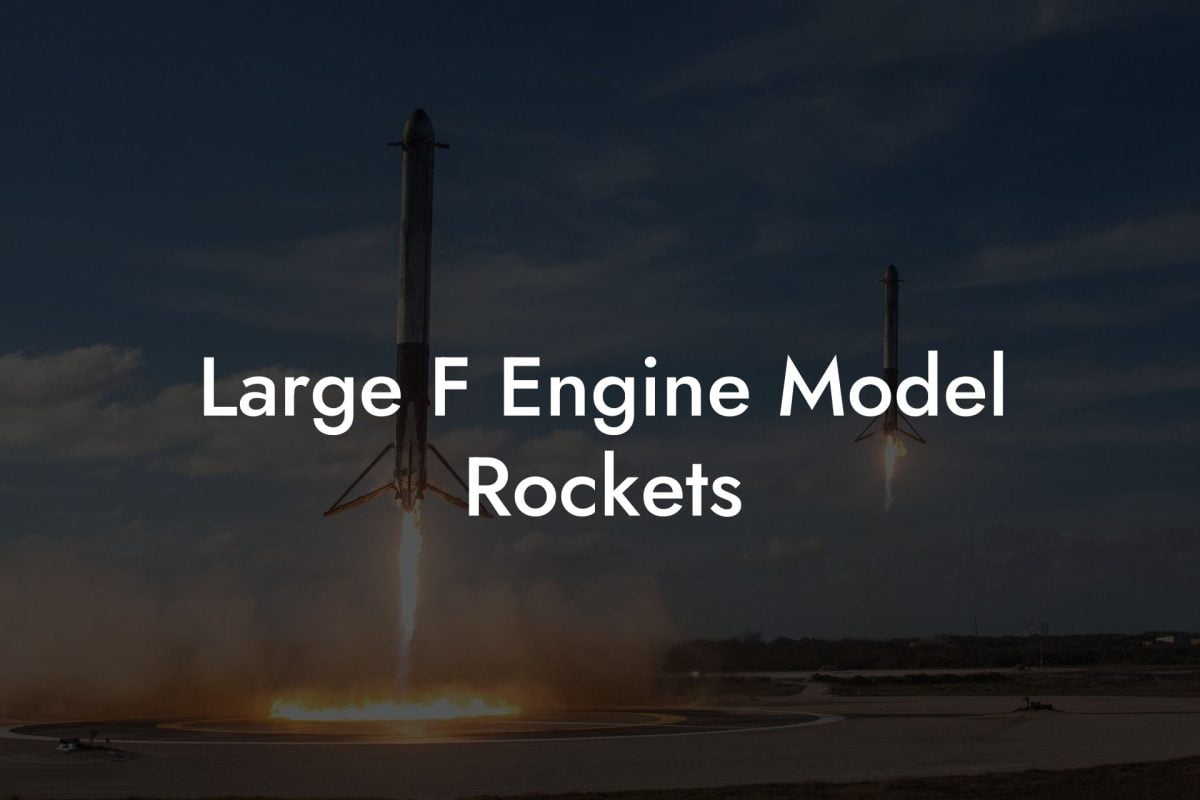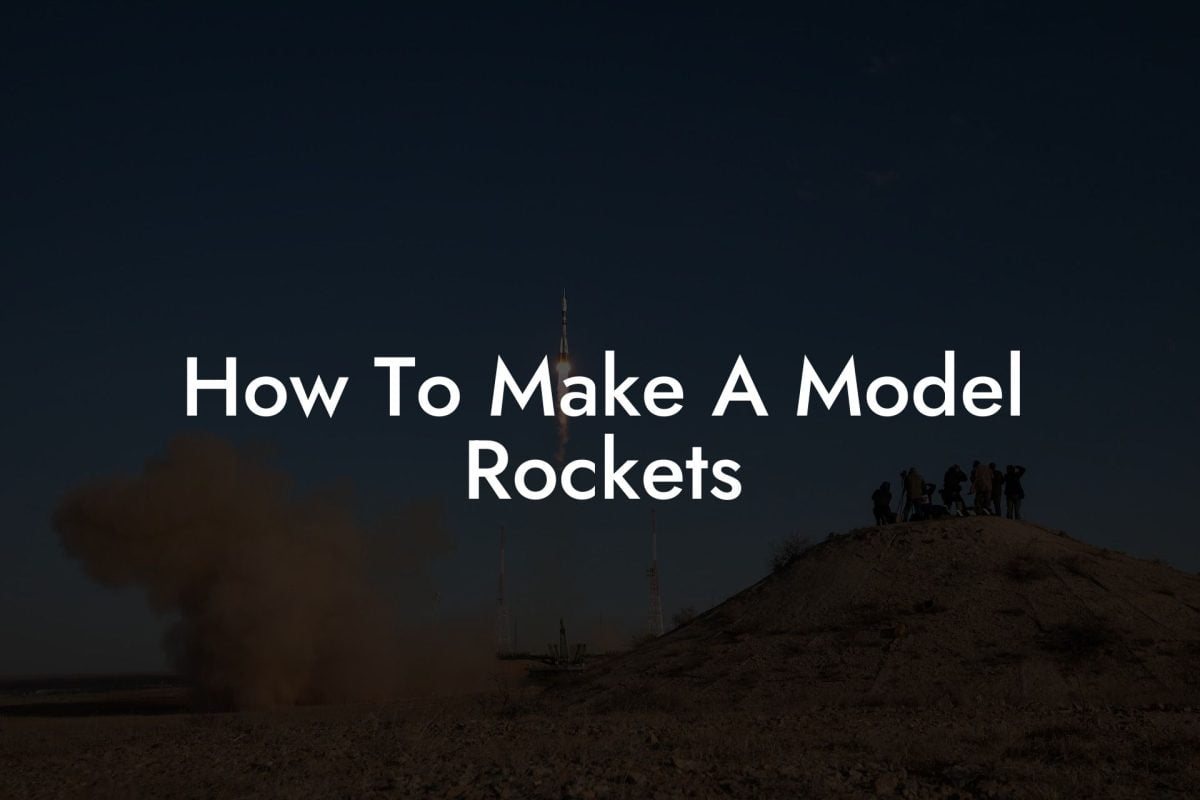Imagine blasting off into the stratosphere, defying gravity, and reaching new heights with your very own E model rocket. Welcome to the thrilling world of model rocketry, where innovation, experimentation, and pure excitement come together in a burst of color and sound. Whether you're a seasoned enthusiast or a curious newcomer, this comprehensive guide will propel you into the fascinating realm of E model rockets, exploring their history, design, performance, and endless possibilities.
Quick Links to Useful Sections
What Are E Model Rockets?
E model rockets are a type of model rocket that uses an E-class model rocket motor, which is more powerful than the smaller A, B, and C motors but less powerful than the larger F, G, and H motors. E model rockets typically have a higher altitude ceiling and more impressive flight characteristics than their smaller counterparts, making them a popular choice among hobbyists and enthusiasts.
E model rockets usually range in size from 10 to 30 inches in length and 1 to 3 inches in diameter, with a typical weight of 1-5 pounds. They can reach altitudes of up to 2,000 feet, depending on the motor and design, and often feature intricate details, custom paint jobs, and advanced electronics.
The History of E Model Rockets
The development of E model rockets dates back to the 1960s, when model rocketry was still in its infancy. The first E-class motors were introduced by companies like Estes and Centuri, pioneers in the model rocket industry. These early motors were relatively simple, using a black powder propellant and producing modest thrust.
Over the years, advancements in technology and materials led to the creation of more powerful and efficient E-class motors. Today, E model rockets are a staple of the hobby, with a wide range of designs, materials, and features available to enthusiasts.
Looking For The Best Model Rocket Kits? You'll Love These:
Design and Performance of E Model Rockets
E model rockets are designed to be more powerful and impressive than smaller model rockets, while still being relatively affordable and accessible. They typically feature a more complex design, with multiple stages, intricate details, and advanced electronics.
The performance of an E model rocket is largely dependent on the motor used. E-class motors can produce up to 40 Newton-seconds of impulse, compared to 1-5 Newton-seconds for smaller motors. This increased power allows E model rockets to reach higher altitudes and achieve more impressive flight characteristics.
- Altitude: E model rockets can reach altitudes of up to 2,000 feet, depending on the motor and design.
- Speed: E model rockets can reach speeds of up to 200 mph during ascent.
- Recovery: E model rockets often feature advanced recovery systems, including parachutes, streamers, and electronic deployment.
Types of E Model Rockets
E model rockets come in a wide range of designs, from simple, beginner-friendly models to complex, high-performance rockets. Some popular types of E model rockets include:
- Scale models: Accurate replicas of real rockets, such as the Saturn V or Space Shuttle.
- High-power rockets: Designed for maximum altitude and speed, often featuring advanced electronics and recovery systems.
- Competitive rockets: Built for competition, these rockets are optimized for performance, stability, and precision.
- Experimental rockets: Designed for research and development, often featuring new materials, designs, or technologies.
Getting Started with E Model Rockets
If you're new to model rocketry, getting started with E model rockets can seem daunting. However, with the right resources and guidance, you can quickly become proficient in building, launching, and recovering your own E model rockets.
Here are some tips for getting started:
- Choose a beginner-friendly kit: Look for kits specifically designed for beginners, with easy-to-follow instructions and pre-cut parts.
- Invest in safety gear: Always wear safety glasses, a helmet, and a long-sleeved shirt when launching and recovering rockets.
- Join a local club or online community: Connect with experienced model rocketeers for guidance, tips, and support.
- Practice and be patient: Don't be discouraged by setbacks or failures – they're an essential part of the learning process.
Resources and Community Support: Your Next Steps
As you embark on your E model rocketry journey, you'll find a wealth of resources and community support available to help you along the way.
Here are some recommended resources:
- National Association of Rocketry (NAR): A non-profit organization dedicated to promoting model rocketry and providing resources for enthusiasts.
- Model Rocketry subreddit: A community-driven forum for discussing model rocketry, sharing tips, and showcasing builds.
- Local model rocket clubs: Join a local club to connect with fellow enthusiasts, learn from experienced builders, and participate in launches and events.
Frequently Asked Questions: E Model Rockets
Here are some frequently asked questions about E model rockets:
1. What is the difference between an E model rocket and a smaller model rocket?
E model rockets are more powerful and have a higher altitude ceiling than smaller model rockets, making them a popular choice among hobbyists and enthusiasts.
2. How high can an E model rocket fly?
E model rockets can reach altitudes of up to 2,000 feet, depending on the motor and design.
3. Are E model rockets safe?
Yes, E model rockets are safe when built and launched according to safety guidelines and regulations. Always wear safety gear and follow proper launch and recovery procedures.
4. Can I build my own E model rocket from scratch?
Yes, with experience and knowledge, you can build your own E model rocket from scratch. However, it's recommended to start with a beginner-friendly kit and work your way up to more complex designs.
5. How much does an E model rocket cost?
The cost of an E model rocket can vary greatly, depending on the design, materials, and features. Beginner-friendly kits can start at around $50, while high-performance rockets can cost upwards of $500.
Looking For The Best Model Rocket Kits? You'll Love These:
Useful Interruption: Dive deeper into the world of Model Rockets with our most popular sections. If there is anything you think is missing or anything you would love for us to write about, just give us a shout.
- Getting Started & Basics With Model Rockets
- Model Rocket Design, Build & Customization
- Model Rocket Propulsion & Engine Technology
- Model Rocket Launch Techniques & Recovery
- Model Rocket Advanced Rocketry & Innovations
- Model Rocket DIY and Customization
- Model Rocket Equipment Reviews & Digital Tools
- Community, Competitions & Education
- Model Rocket Troubleshooting & FAQs
- Model Rocket Bonus/Seasonal & Niche Topics
A group of model rocket enthusiasts gathered at a field for their weekly launch event. Among them was Dave, a seasoned builder known for pushing the limits of hobby rocketry. This time, he had outdone himself.
“Ladies and gentlemen,” Dave announced, dramatically pulling a cloth off his latest creation, “I present to you: The Kraken!”
The crowd gasped. This wasn’t just a model rocket, it was a monster. The thing stood 8 feet tall, had six clustered engines, and was covered in enough duct tape to qualify as a classified aerospace project.
“Dave,” muttered Steve, the cautious safety officer, “Have you, uh… done the math on this?”
“Math?” Dave scoffed. “I built it in my garage at 3 a.m. with parts from eBay. This is an art piece, Steve.”
The countdown began.
5…
4…
3…
2…
1…
The engines ignited with a BOOM, and The Kraken shot up… kind of. It immediately did a violent barrel roll, narrowly missing the spectators before skyrocketing at an angle that could only be described as “legally questionable.”
The crowd collectively ducked as The Kraken flew straight over the adjacent cornfield, where Old Man Jenkins, the grumpiest farmer in town, was minding his business.
KABOOM!
The rocket disappeared behind the barn. A moment later, a flaming piece of Estes igniter wire landed at Steve’s feet. The silence was deafening.
And then, an unmistakable sound echoed across the field.
Jenkins’ shotgun being cocked.
“DAVE!!!” Steve shouted. “RUN.”
And that was the day Dave invented the first-ever biologically powered rocket booster: pure adrenaline.
To this day, nobody knows where The Kraken landed, but legend has it, it still haunts the skies, terrifying unsuspecting drones and low-flying birds.















